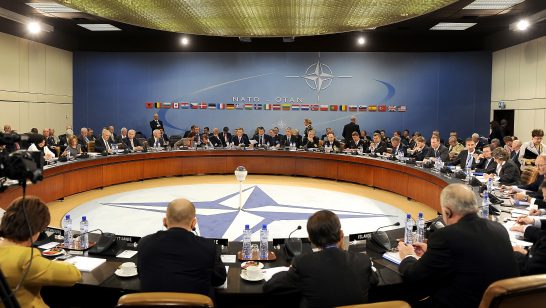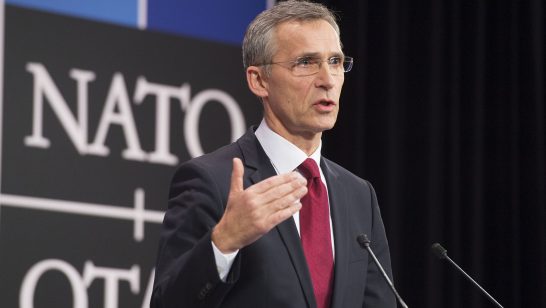The ELN first raised the issue of dangerous military-military and military-civilian encounters between Russia and the West with its ground-breaking report Dangerous Brinkmanship: Close Military Encounters Between Russia and the West in 2014 which provided the first comprehensive overview of the scale of the problem and the dangers of escalation stemming from incidents or accidents involving the aircraft and ships of Russia, NATO or neutral states.
We followed up with updates to the report, a dedicated expert workshop in Brussels and direct engagement with the European capitals and at NATO. Our report, Managing Hazardous Incidents in the Euro-Atlantic Area: A New Plan of Action, published in November 2016, offered specific risk-reduction solutions, such as reviving the existing bilateral agreements on managing incidents (INCSEAs and DMAs), concluding additional similar agreements at bilateral and NATO-Russia level, re-activating or adapting the Cooperative Airspace Initiative, and stepping up expert-level dialogue on the safety of military-civilian encounters over the Baltic Sea.
As noted in the ELN’s latest report, by 2018 there had been significant progress in managing Russia-West incidents. Discussions with the Russian side were held via the NATO Russia Council and the Baltic Sea Project Team (BSPT), with expertise from ICAO and EUROCONTROL. There has been a noted increase in military transparency from both sides over flight plans and ‘principles of due regard’ – regulations for the expected behavior of military planes when close to civilian aircraft. Moreover, the ELN’s research has had a direct impact on the decision of at least one NATO country to launch negotiations with Russia over updating its existing INCSEA agreement. ELN reports were used to make the case for the update internally, as well as in discussions with the Russians.
More broadly, ELN research and recommendations on the topic have played a major role in convincing policymakers and the public in both Russia and the West of the need to address this issue. Incident-prevention has now been discussed by the NATO-Russia Council and the BSPT, with a number of proposals closely resembling the ELN’s suggestions. Several INCSEA agreements have been updated in line with ELN advice (including the UK-Russia agreement), with more to be updated soon. Moreover, international organisations like ICAO (the International Civil Aviation Organisation) have facilitated discussions on reducing dangers to civil aviation over the Baltic. Finally, US lawmakers from the House and Senate support military-to-military dialogue between the United States and Russia to reduce the risk of conflict. For these reasons, we can say with confidence that the ELN has played a tangible and effective role in changing policy to reduce the likelihood of dangerous military incidents in Europe.
Resources
- Lessons Learned? Success and Failure in Managing Russia-West Military Incidents 2014-2018, by Thomas Frear, ELN Policy Brief, April 2018
- Managing Hazardous Incidents in the Euro-Atlantic Area: A New Plan of Action By Lukasz Kulesa, Thomas Frear and Denitsa Raynova, November 2016
- Preparing for the Worst: Are Russian and NATO Military Exercises Making War in Europe more Likely? by Ian Kearns, Lukasz Kulesa and Thomas Frear, ELN Policy Brief, August 2015
- Avoiding War in Europe: how to reduce the risk of a military encounter between Russia and NATO, Task Force Position Paper, July 2015
- Trump, Putin and the Growing Risk of Military Escalation by Lukasz Kulesa and Shatabhisha Shetty, Policy brief, 4 July 2017
- Russia – West Dangerous Brinkmanship Continues
- Dangerous Brinkmanship: Close Military Encounters Between Russia and the West in 2014



